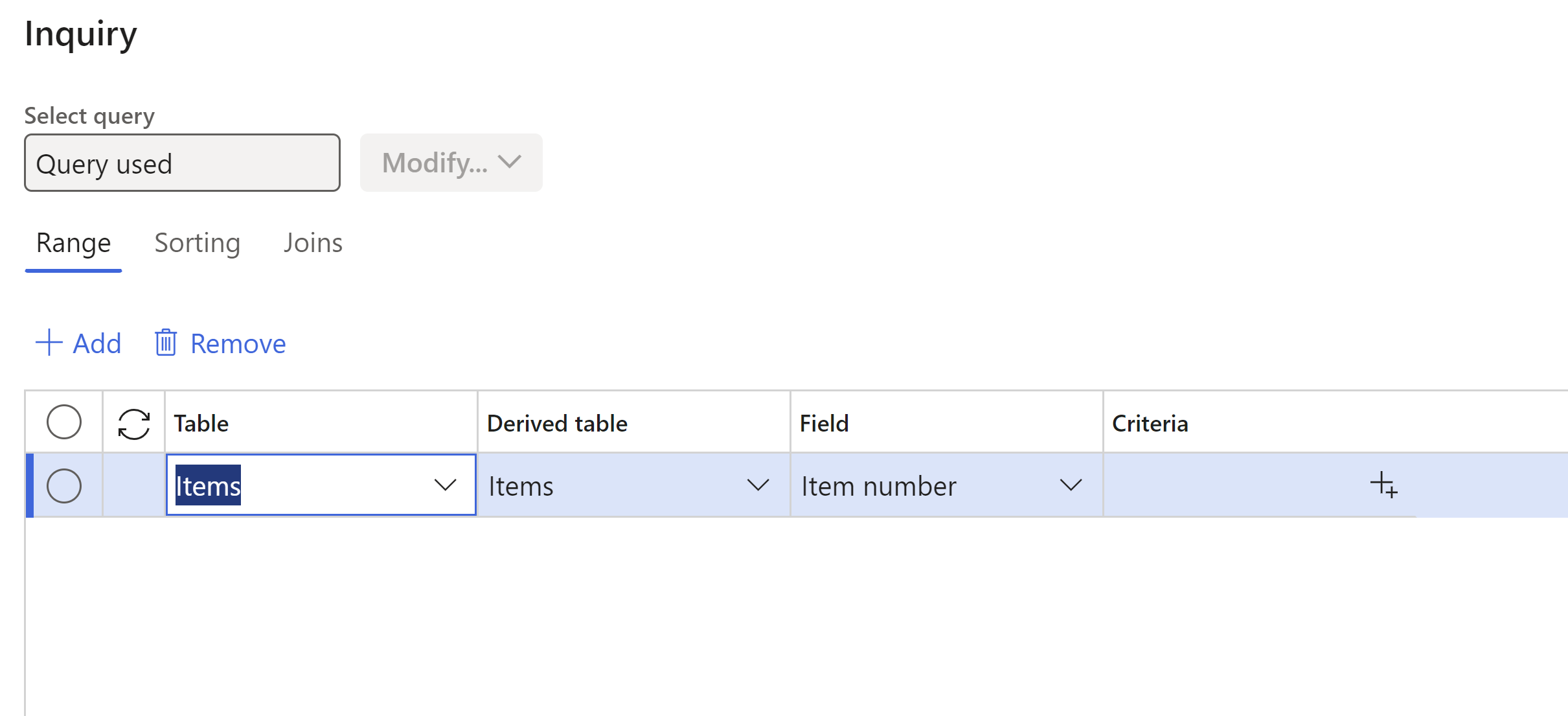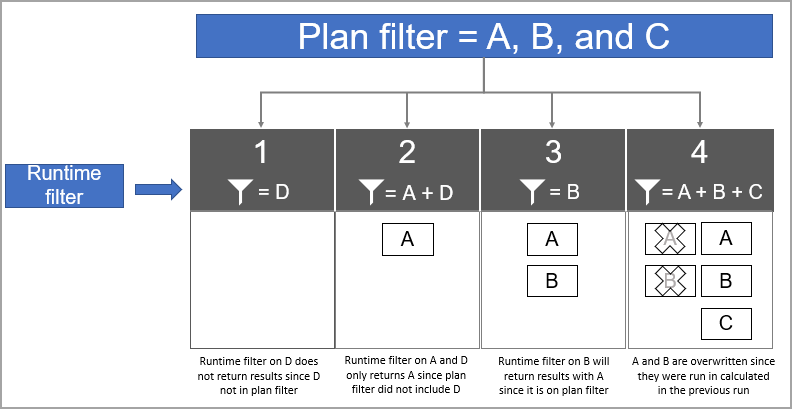Apply filters to a plan
When using master planning, you can apply a filter to a plan. A plan filter limits a plan to a specific group of items and make sure that no other items are included as part of the calculations.
Plan filters and runtime filters, that you set when running a plan, can be applied when you run master planning. Only the intersection of the two filters is included in the planning run.
A runtime filtered master planning run doesn't delete current results in the plan from a previous run. For example, if you run a plan for item A, it gives you results for item A, and these orders are kept when you run a plan that is filtered for item B. The second run will now include A and B.
An unfiltered run only keeps approved planned orders between runs.
The Plan filter can be accessed from Master planning > Setup > Plans > Master plans when Planning Optimization is active. The following screenshots show the Plan filter tab and the Inquiry page.

Example
The following diagram shows what happens when the Plan filter is for Items A, B, and C, and it also has a runtime filter that is set when the Planning Optimization is run. In the diagram, the boxes that are labeled 1, 2, 3, and 4 represent master planning runs, each with a runtime filter along with the plan filter.
The runs are completed in sequence and the result from the previous run is left untouched.
For example, in the second run, a runtime filter on A and D and a plan filter of A, B, and C will provide results for item A.
In the third run, the result for A from the second run is kept as a filtered run that doesn't include a recalculation for A but only B.

